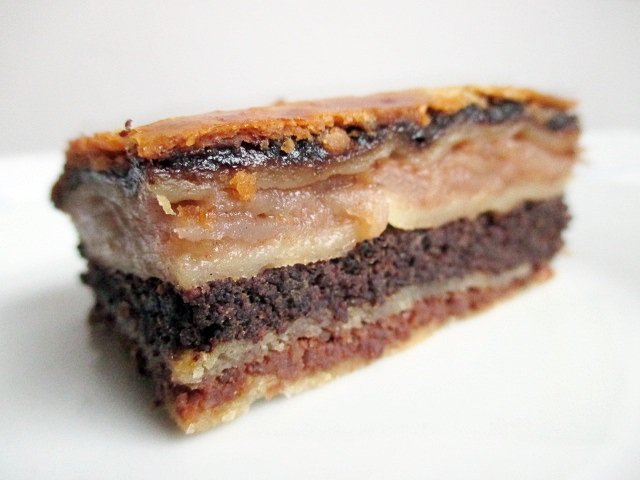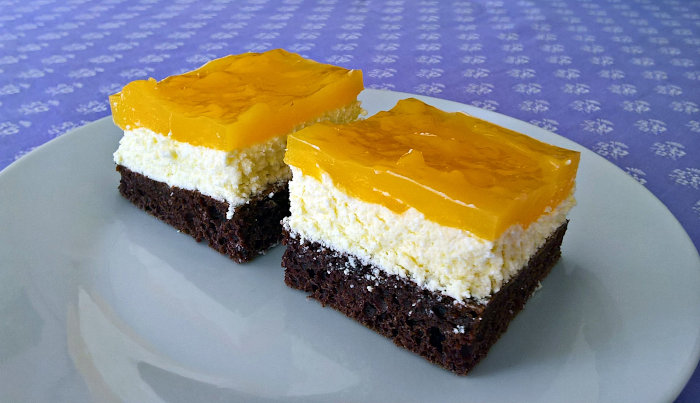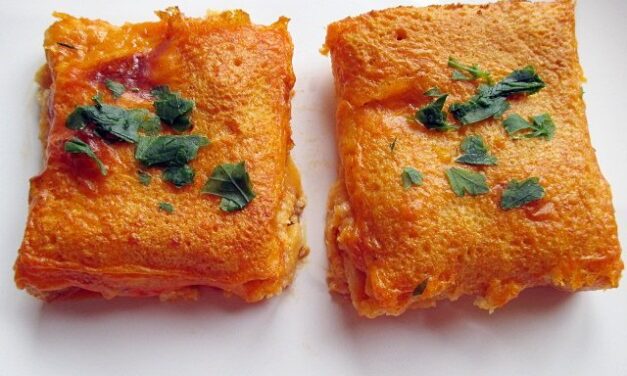As the saying goes if you want to eat good flódni, you’ll have to visit Hungary. The homeland of flódni is Hungary, but nowadays it’s also offered in other parts of the world as a specialty of the Hungarian-Jewish cuisine. In many families flódni – just like beigli or zserbó – can’t be omitted from the holidays’ confection repertoire. Some bake it for Christmas or for Hanukkah, others make it for the New Year’s Eve.
Flódni is a concentrated dessert; a delight for the eyes and the palate. It’s a real Canaan for sweets lovers, full of ingredients with symbolic meaning. Warning! Flódni is very addictive, you simply can’t stop eating it. Once you taste it, you’ll immediately forget the hard work and effort you’ve devoted to its preparation. Making flódni is very time consuming, but it’s worth your time once a year because it’s so abundant that by serving it you can give enough to eat to the whole family and friends. And not to mention that flódni contains every ingredient that might bring health and affluence for the new year according to the folk tradition.
The recipe’s roots derive from the medieval France and Germany, but the form we know at present has been developed by the Jews of the Carpathian Basin. The recipe has run in Jewish families from generation to generation, but today flódni is baked regardless of religion in pastry shops as well as home. Flódni is a rich and heavy confection, in which the Hungarian and Jewish tradition meet. This pastry represents the unity of people of different religions and ethnicities living together: the individual layers can be enjoyed separately, but it is advisable to consume them together for the perfect effect.
The traditional flódni consists of five sweet cake layers and four different fillings: apple, walnut, poppy seed and plum jam. Considering the Kosher eating rules the dough was originally made with goose fat, but meanwhile butter has taken its place. Dry or semi-dry (kosher) white wine is an essential ingredient as it’s added to the dough as well as to the apple, walnut and poppy seed fillings. The recipe calls for plum jam, but it can be replaced with apricot jam. The only thing you have to pay attention to is that the jam must be very thick in order not to flow out of the layers. As you can see in the recipe, sugar is not overdosed because flódni should be sourish-sweet, but feel free to add a little more sugar if you want.



















6 Comments